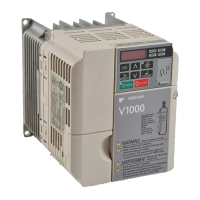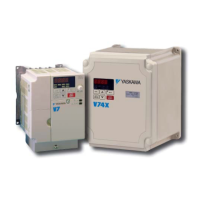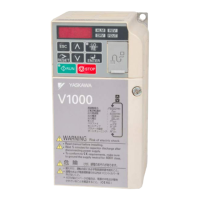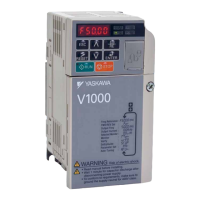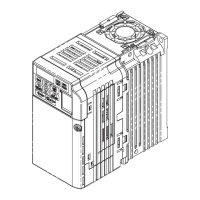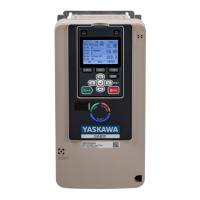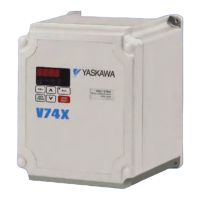n
L3-24: Motor Acceleration Time for Inertia Calculations
Sets the time it takes to accelerate the motor from stop to the maximum speed at motor rated torque.
This parameter should be set when using KEB Ride-Thru 2, automatic adjustment for optimal Stall Prevention during deceleration (L2-04 = 2), or the
overvoltage suppression function (L3-11 = 1).
No. Name Setting Range Default Page
L3-24 Motor Acceleration Time for Inertia Calculations 0.001 to 10.000
Determined by o2-04,
E2-11, and E5-01
−
Note: Parameter o2-04 is defaulted for a Yaskawa standard 4-pole motor. During Auto-Tuning, o2-04 will be initialized to a Yaskawa standard 4-pole motor if parameter E2-11 is
changed. This value changes based on the motor code set to E5-01 when using the Open Loop Vector Control Mode for PM motors.
Calculations are made as follows:
J: GD2/4
P: Rated output
ta = 2 J [Kgm ] Nr [r/min] / [60 T (Nm)]
To solve for T :
T = 60 P[kW] x 103 / [2 Nr (r/min)]
100
100
100
.
.
.
.
.
n
L3-25: Load Inertia Ratio
Determines the ratio between the rotor inertia and the load. Set this parameter when using KEB Ride-Thru 2, when optimizing Stall Prevention during
deceleration (L2-04 = 2), and when using the overvoltage suppression function (L3-11 = 1).
No. Name Setting Range Default Page
L3-25 Load Inertia Ratio 0.0 to 1000.0 1.0 −
Note: When set incorrectly, a fairly large current ripple can result during KEB Ride-Thru 2 and while automatic adjustments are made for Stall Prevention during deceleration (L3-11
= 1). Other possible faults such as OV, UV1, and OC may also occur. load inertia = machine inertia (motor shaft calculated value) / rotor inertia
u
L4: Frequency Detection
Sets the output signal for a series of functions assigned to the multi-function output terminals that determine frequency agree, user-set frequency agree,
frequency detection, and so on.
n
L4-01: Speed Agreement Detection Level
n
L4-02: Speed Agreement Detection Width
L4-01 and L4-02 allow the user to set the Speed Agreement specifications when Frequency Detection 1, Frequency Detection 2, or User-Selected Frequency
Agree 1 are assigned to the multi-function terminals.
For more information,
Refer to H2: Multi-Function Outputs on page 171.
n
L4-03: Speed Agreement Detection Level (+/-)
n
L4-04: Speed Agreement Detection Width (+/-)
L4-03 and L4-04 allow the user to set the Speed Agreement specifications when Frequency Agree 2, Frequency Detection 3, Frequency Detection 4, or
User-Selected Frequency Agree 2 are assigned to the multi-function terminals.
For more information,
Refer to H2: Multi-Function Outputs on page 171.
n
L4-05: Frequency Reference Loss Detection Selection
n
L4-06: Frequency Reference at Reference Loss
No. Name Setting Range Default Page
L4-05 Frequency Reference Loss Detection Selection
0: Drive will stop.
1: Continue running at L4-06.
0 −
L4-06 Frequency Reference at Reference Loss 0.0 to 100.0 80.0 % −
• The frequency reference is considered “lost” when it is entered from an external source, and suddenly falls below 90% for more than 400 ms.
• If L4-05 = 1, the drive will not stop when the frequency reference is lost, but will instead operate at the value set to L4-06. The drive will switch back
to the main frequency reference once it is restored.
• To have a fault output trigger when the frequency reference is lose, set H2-01, H2-02, or H2-03 to “C”.
Note: Frequency reference loss detection: analog reference supplied via terminal A1 can be supplied from terminal A2 by setting H3-10 to 0.
n
L4-07: Frequency Detection Conditions
Parameter Overview
5.8 L: Protection Functions
YASKAWA ELECTRIC SIEP C710606 18A YASKAWA AC Drive – V1000 Technical Manual (Preliminary)
195
5
Parameter Details

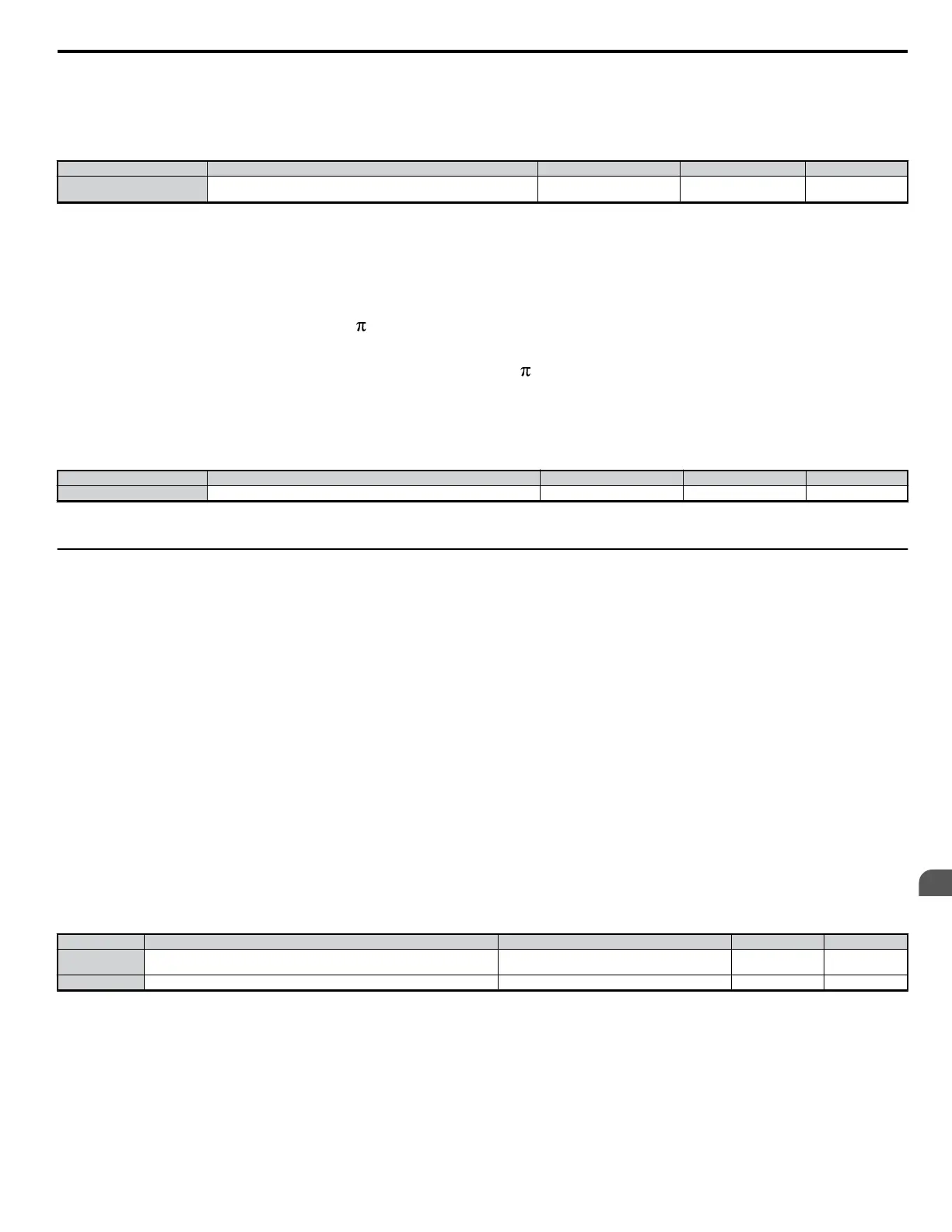